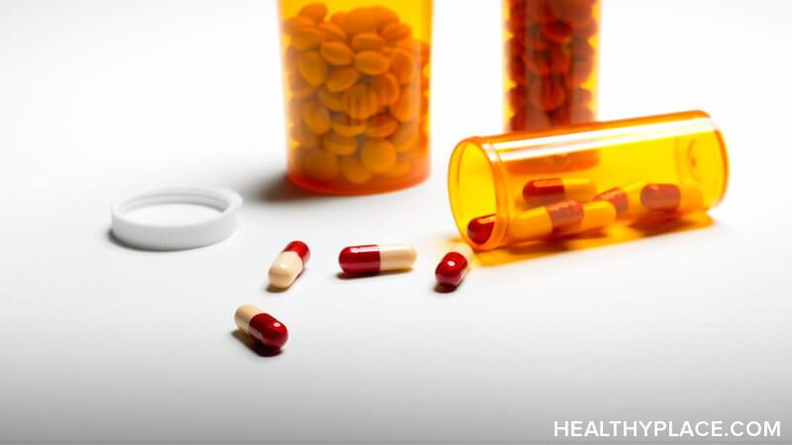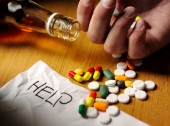The Prescription Drug Abuse and Addiction Epidemic

Prescription drug abuse and addiction is an epidemic. It affects people from all walks of life, all ages, races, ages, backgrounds, socioeconomic standing, etc. There is a huge rise across the country in the numbers of nonmedical use and abuse of prescription drugs. It is important to understand that prescription drug abuse is defined as “the use of a medication without a prescription, in a way other than as prescribed, or for the experience or feelings elicited.”
The Statistics of Prescription Drug Abuse and Addiction are Alarming
A few key statistics from the National Institute on Drug Abuse:
- 52 Million people have used prescription drugs for nonmedical reasons at least once in their lives
- An estimated 2.4 million Americans used prescription drugs nonmedically for the first time with the past year
- Vicodin and OxyContin are the drugs most often abused by adolescents.
- Approximately 1 million emergency department visits in selected areas across the country can be contributed to prescription drug abuse
- More than 26,000 fatal drug overdoses each year in the US and prescription drug abuse is the leading cause of those.
Why An Increase In Prescription Drugs Addiction?
I believe the biggest contribution to the increase is easy to access prescription drugs on the Internet and through doctors. I am not saying all prescription drugs are bad, or that they are being prescribed to all in an improper way. I know many people who struggle with chronic pain or short term anxiety, and I believe these drugs have a place if monitored by a doctor. The problem is when a doctor is so willing to write a prescription, and not monitor the care of the patient afterward.
the Internet and through doctors. I am not saying all prescription drugs are bad, or that they are being prescribed to all in an improper way. I know many people who struggle with chronic pain or short term anxiety, and I believe these drugs have a place if monitored by a doctor. The problem is when a doctor is so willing to write a prescription, and not monitor the care of the patient afterward.
Another issue we are starting to hear more about is the Florida prescription issue, where there are so many open door clinics with easy access to drugs, without being diagnosed, monitored, rarely any questions asked.
With regards to teenagers, leftover prescription drugs easily found in the family drug cabinet can become an issue. Teens are willing and are known to sell drugs or exchange drugs with each other, without direct knowledge of the consequences of prescription drugs abuse, only in search of a high, or means to add to alcohol to reach a better illicit feeling. The combination of alcohol and drugs is extremely dangerous to the central nervous system and can literally slow down the heartbeat and contribute to a person stopping breathing while asleep and overdose. These risks need to be addressed and these issues need to be brought to teens.
Prescription Drugs Are Extremely Addictive
I also do not think people understand how incredibly addicting prescription drugs can be, and how after only a few days, our body may show signs of dependence. It is critical to be mindful of this, and talk with doctors to monitor how to get off the drug in a healthy way. Prolonged drug use and abuse change the brain in fundamental and long lasting ways. Prescription use can lead to abuse, to addiction in such a short time, especially for those who are predisposed to addictions.
When I was in early recovery from substance abuse, I also was abusing benzodiazepines, Klonopin especially. I loved mixing alcohol and Klonopin, and over time I knew I couldn't use Klonopin in a responsible manner. I am grateful for my psychiatrist in my addiction outpatient program, who said I was not allowed to use any benzodiazepines because I had an addictive personality, was abusing alcohol, and we had to find healthier ways to manage my anxiety and panic disorder.
To this day, when doctors recommend drugs to me I have to be outspoken about my not being allowed to use benzodiazepines because I love them too much and am known to abuse them. I think in recovery from alcohol addiction, it is important to know that any substance, including prescription drugs, can be “using,” and we have to be diligent in our healthcare and the drugs we use.
Doctors should screen for these issues, but the patient who struggles with addiction also needs to be responsible for knowing to ask if any drug prescribed has the potential to become addictive. I always do my research on drugs when they are prescribed now.
What Can We Do to Fight Prescription Drugs Abuse and Addiction
The National Coalition Against Prescription Drug Abuse (NCAPDA) in an organization created to help address these issues. It was created after April Rovero lost her 21-year-old son, who was in college, due to an overdose from a lethal combination of misused prescription medication and alcohol in 2009. Its mission:
The National Coalition Against Prescription Drug Abuse (NCAPDA) was established to help reduce the number of deaths and addictions caused by prescription drug abuse, through the implementation of a nationwide awareness campaign, the initiation and support of pertinent legislative action and through partnerships with educational, medical, law enforcement and other appropriate entities.
This website is an amazing resource for education and outreach for people wanting to not only know more about prescription drug abuse and addiction but helps give education and info to parents on what they can do. There are articles, website resources, pamphlets to print up, and phone number to call in case of the need for further help, support or education. I would highly recommend for people who are not familiar with prescription drug abuse and addiction, to visit this website to learn more and get involved in their own community and schools.
APA Reference
Sebelius, K.
(2012, March 19). The Prescription Drug Abuse and Addiction Epidemic, HealthyPlace. Retrieved
on 2025, December 13 from https://www.healthyplace.com/blogs/debunkingaddiction/2012/03/prescription-drug-abuse-and-addiction-epidemic
Author: Kendra Sebelius
I have GAD and panic attacks. When I was first DX'd the only thing the doctor could find that calmed me down enough to even think was valium. I took it 5 times a day for 2.5 months and then spent 2 weeks getting off it, when I felt like I had enough help with my issues that i could function without it. My question is, your article states that even after a few days your body shows signs of dependency, is that for every person? I didn't seem to have a problem stopping the medication and when I quit, I didn't feel the need to ever take it again. I guess what i am really saying is, this medication really saved my life and not everyone abuses it and becomes addicted.
Drug abuse exhibits an alarming problem over all the world, because the number of persons that misuse these addictive substance is going on increase.On the other hand the consequences from this medico-social vice are tremendous for personal and community wellness. Even the provocative factor to this fatal and compulsive habit are complex and multidimensional, the prescription of these drug from physician indicates as great and booster cause. By me, the crucial protective undertaking is the improvement of knowledge on mental health parameters that contribute in growing up healthy and mature persons. Shortly, this prospective intention would be realize with a functional promotion and affirmation of mental wellness. It goes without saying that this hopeful suggestion would be an illusion if we could't change our misconception about mental disorder that are demonstrated through many social prejudices.